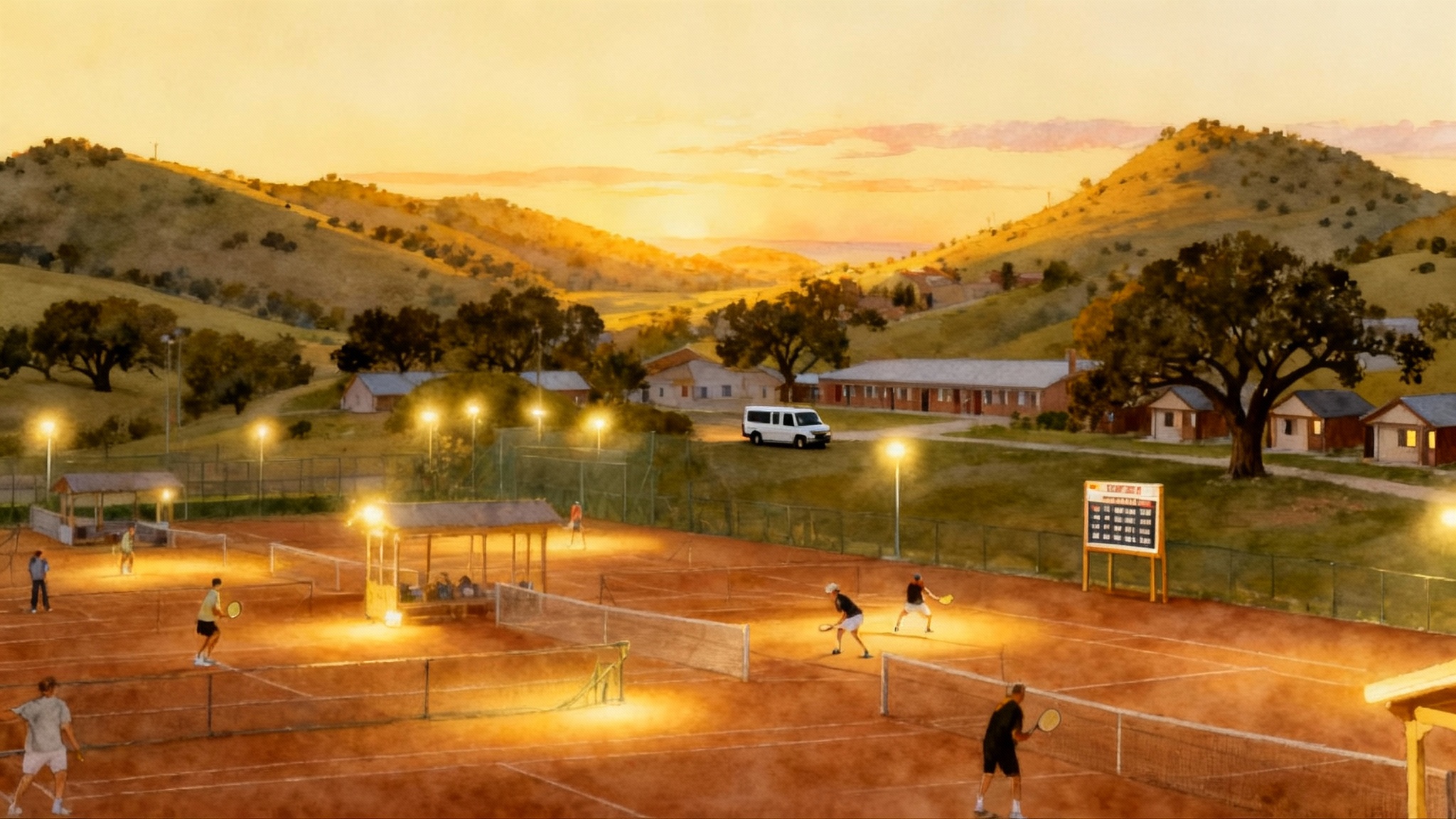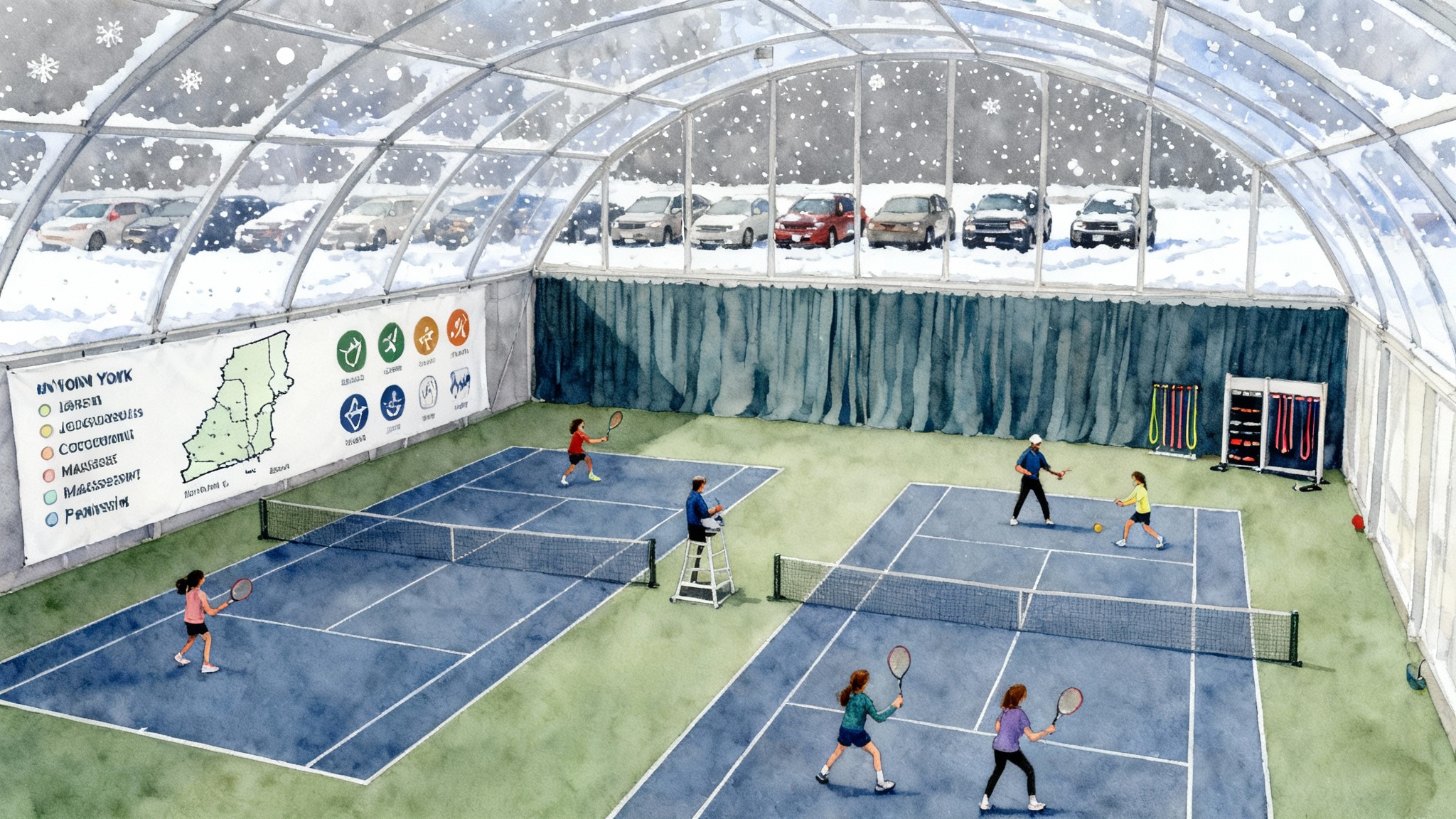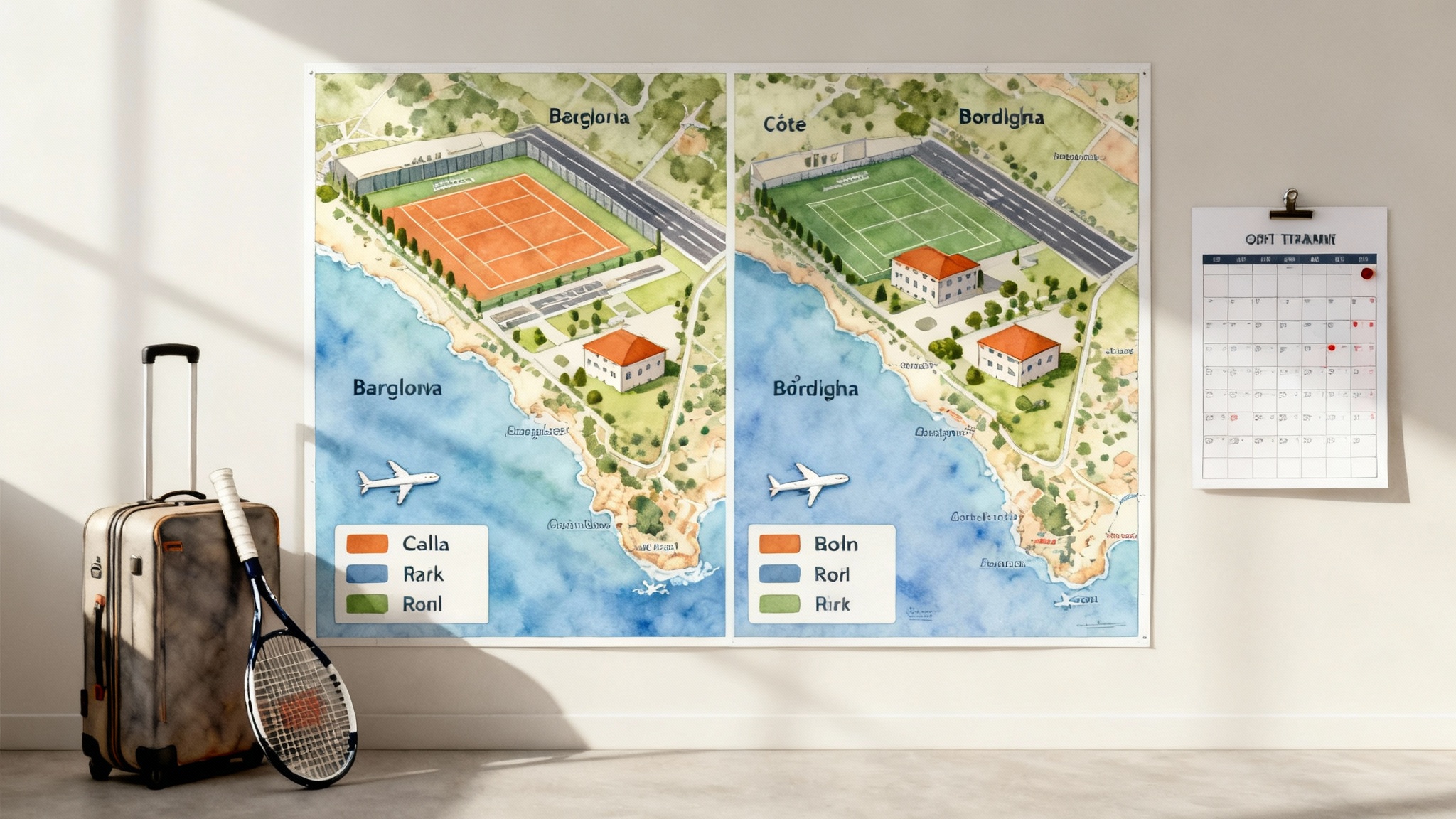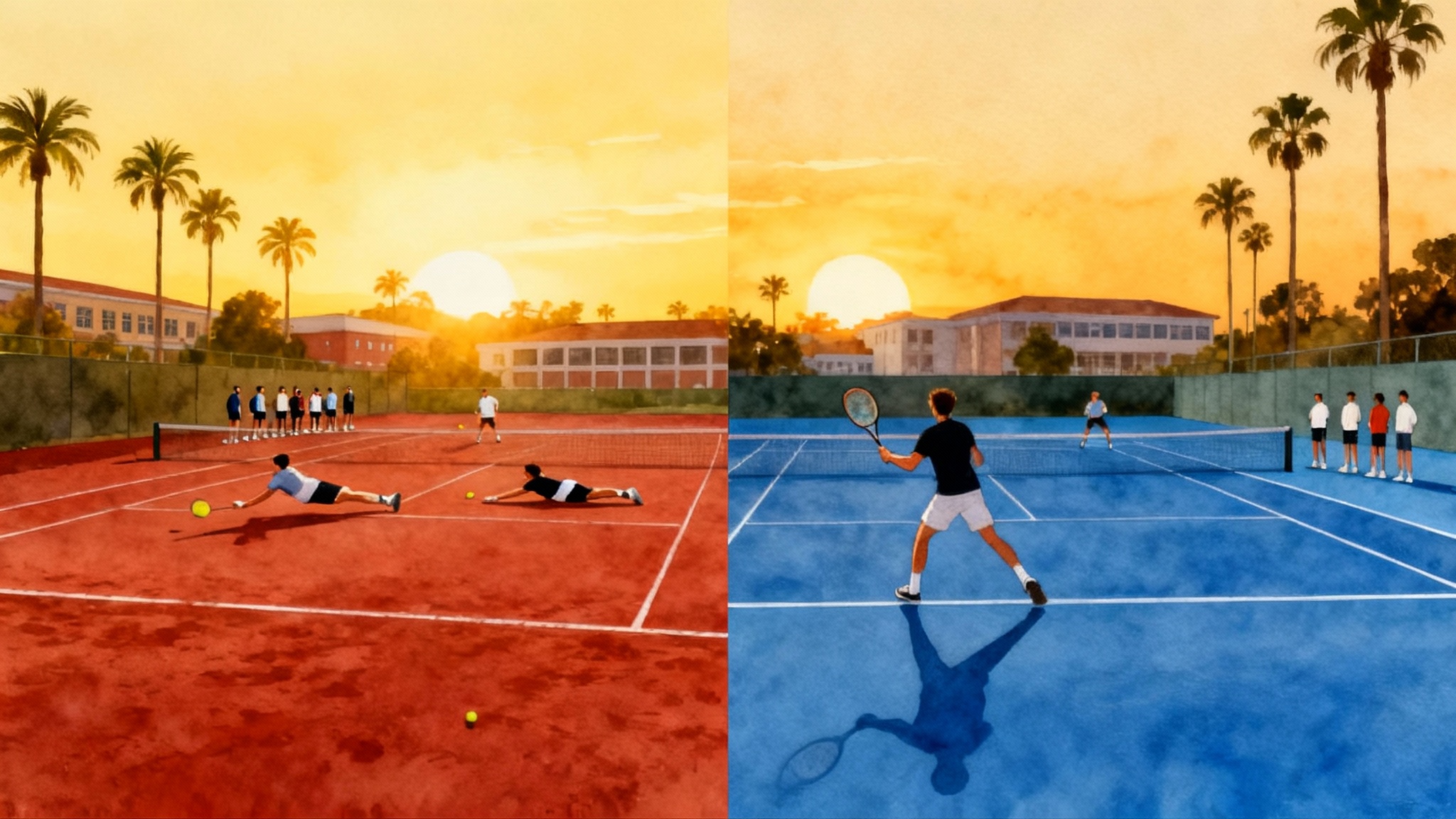The 80 20 Tennis Blueprint: Faster Progress for Busy Adults
Short on time but serious about improvement. Use the 80 20 blueprint to target the shots, patterns, and habits that decide most points. A practical 30 day plan with simple drills, match games, and clear metrics.
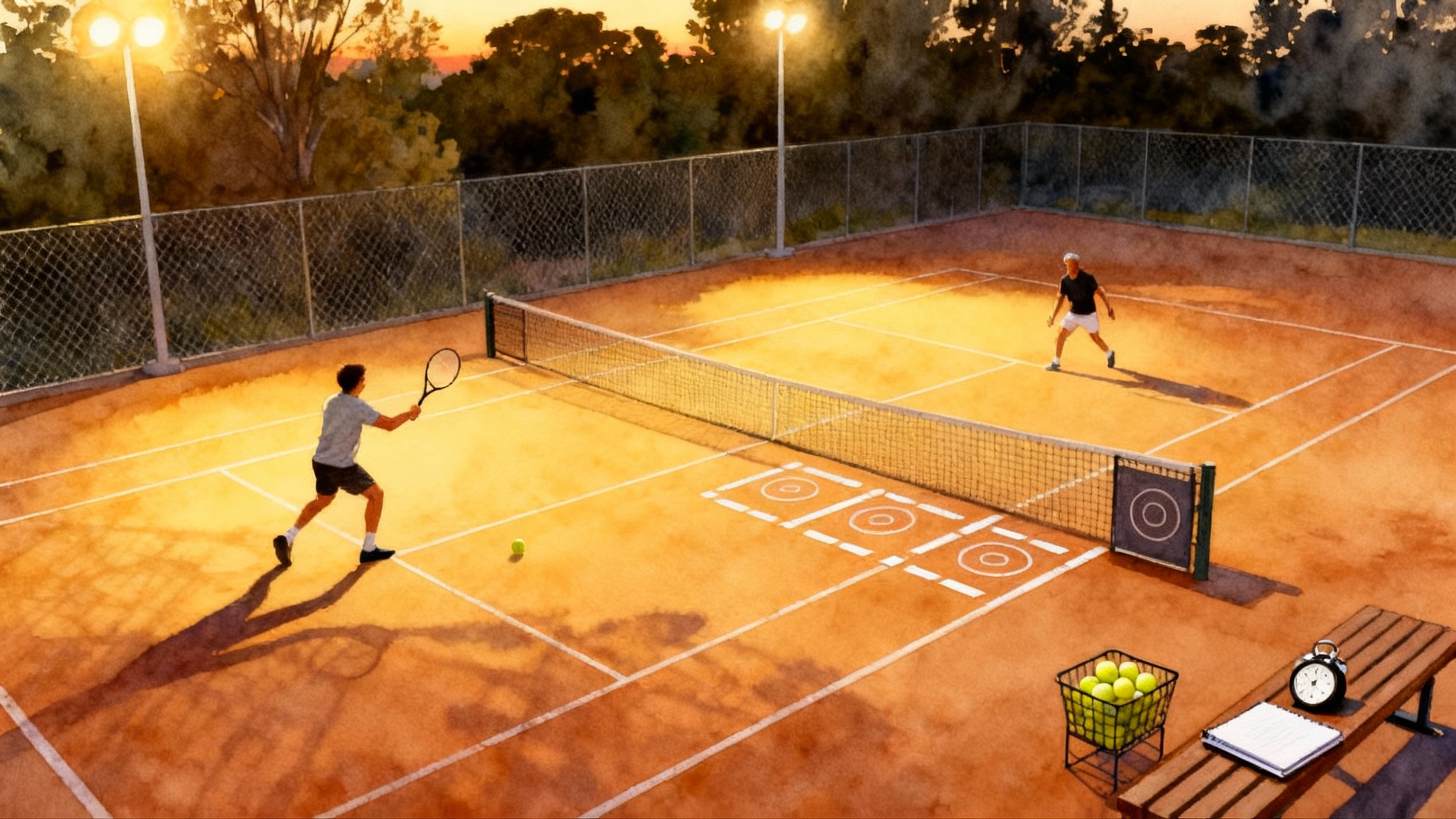
Why busy adults improve slowly and what to change
Most adult players do not lack effort. They lack a filter. With work, family, and limited court time, they try to practice everything and end up improving nothing. The cure is not more hours. It is a sharper plan that targets the parts of tennis that decide most points.
Enter the 80/20 idea. In many complex skills, a small set of actions drive most of the results. In tennis that means you can focus on a narrow group of shots, patterns, and habits and still gain a large share of match outcomes. This blueprint translates the 80/20 idea into a practical plan that fits a busy week. You will learn exactly what to train, how to structure a 30-day sprint, and how to measure progress without fancy tech.
For players who want a destination training block later this year, see our best California adult academies guide.
The three skills that decide club matches
If you play singles or doubles at the club level, three skills swing the majority of games.
-
Serve and first ball. Your serve plus your next shot sets the tone. A reliable first serve that lands to smart targets and a purposeful plus-one shot creates early control. The same is true on second serves. If you can kick or slice to a safe lane and then direct the first groundstroke to space, you win cheap points and avoid panic scrambles.
-
Return and first neutral ball. Returns do not need to be flashy. They need to be early and deep enough to neutralize the server. The first neutral ball after your return is where many points are lost. Avoid the rushed miss by choosing a high percentage lane and committing to height over the net.
-
Repeatable rally pattern. Most players hit their best forehand off a neutral ball to the middle, yet they chase lines because it feels bold. Build one repeatable pattern you trust under pressure. For many players that is crosscourt forehand heavy with height, then a change to the open court. Doubles players should add a simple I formation or Australian pattern to steal a return lane.
These three areas cover the majority of touches that happen before a point turns wild. Master them and your ceiling rises even if your highlight shots stay the same.
The 30-day structure for busy adults
Here is a plan that fits three on-court sessions and two short off-court sessions per week. Each on-court session runs 60 to 75 minutes. Adjust up or down by ten minutes without breaking the flow. For a printable version, use our printable 30 day session planner.
- Week 1 focus: Contact quality and targets
- Week 2 focus: Serve and return patterns
- Week 3 focus: Movement and spacing
- Week 4 focus: Match play pressure and scoring
Every on-court session follows the same template:
- Ten minute warmup: dynamic movement, mini tennis, rhythm serves
- Thirty minute block: primary focus of the week
- Fifteen minute block: secondary focus from the three core skills
- Ten minute competitive game: a scoring drill that forces decisions
- Five minute cool down: notes and metrics
Off-court sessions are twenty minutes each. One mobility and footwork. One strength and injury prevention. Details below.
Week 1: Contact quality and target confidence
The goal is to groove contact that produces height, depth, and shape without strain. Imagine the ball as a clock. If you brush from five to one for topspin on the forehand and from seven to one on the backhand, you give yourself a big margin over the net.
- Drill: Two cones deep crosscourt. Rally to clear the net by three feet minimum. Count five-ball streaks that land past the service line. Aim for four streaks in ten minutes per side.
- Serve targets: Place two flat discs on the deuce box at wide and body. Hit sets of ten first serves to each. Track makes and misses. Goal is six of ten to each target with clean rhythm, not extra power.
- Plus one: After a serve, coach or partner feeds to the middle. You drive a forehand crosscourt to space. Reset. Ten reps per side.
Game of the day: First strike to three. Server wins a bonus point if the point ends within the first two shots after the serve, but only if the serve clears the net with shape. This rewards smart spin, not reckless speed.
Week 2: Serve and return patterns that travel
Most adult matches are decided by who starts the point with control more often. You do not need a pro serve. You need a routine that repeats under nerves.
- Serve routine: Build a simple three step sequence. One breath and visual, two bounces and stance set, toss to a consistent height. If your toss wanders, lower it slightly and cue wrist stillness. Practice the routine on every ball, even in warmup.
- Deuce side pattern: Slice wide to pull the returner off court, then forehand to the open court. If the opponent cheats, aim body to jam.
- Ad side pattern: Kick or topspin to backhand, then rally crosscourt heavy with height. Only change direction when you are set.
- Return practice: Stand a half step back, shorten the backswing, and choose height. Even a blocked return that lands deep resets the point. Try five sets of ten returns focused on depth, then five sets aimed at body.
Game of the day: Server vs returner to eleven points. Server only scores on first serve points. Returner scores on any point won. This forces first serve focus and return resilience.
Week 3: Movement and spacing you can keep
Footwork is not about fancy ladders. It is about being on time. Use a split step as the server tosses or the opponent starts forward. Land the split as the ball is struck. Then move with small first steps, not lunges.
- Spacing drill: Coach or partner random feeds between center and a cone two steps wide. Your only job is to hit from the ideal contact distance. If you feel crowded, pull back. If you feel stretched, recover earlier. Ten minutes forehand, ten minutes backhand.
- Recovery lanes: After a crosscourt shot, recover along the bisector of the open court, not straight back to center. Visualize a shallow V back to your next ready spot.
- Approach and close: Feed a short ball. Drive deep crosscourt. Split step as you cross the service line. Volley to the open space. Reset. Fifteen reps each side.
Game of the day: Two cross, one change. In rallies, you must hit two crosscourt shots before you are allowed to change direction. This teaches patience and positioning.
Week 4: Pressure and scoring that feel like matches
It is tempting to drill all month and hope it sticks in matches. Instead, practice with scoring that raises your heart rate.
- Serve boxes under pressure: Play deuce and ad games to five points where you must serve only to one chosen target. If you miss the target, replay the point. This sharpens aim and routine.
- Second serve trust: Play games where you start every point with a second serve. No exceptions. Learn to kick or slice and trust it.
- Return steal: Doubles or singles, run a return game to seven from the ad side only. Try lobs, blocks, and drives, but track what wins the most. Keep notes.
Game of the day: Thirty all breaker. Start every game at thirty all. First to two points wins the game. Play a first to seven games set. This creates frequent big points and forces clear patterns.
Two short off-court sessions that matter
You do not need a gym block to get tennis strong enough. You need smart basics.
- Mobility and footwork, twenty minutes: ankle circles, calf raises, hip openers, thoracic rotations, then four rounds of split step to shuffle to sprint to backpedal. Keep rest short and posture tall.
- Strength and injury prevention, twenty minutes: three sets of five on goblet squats, hinge deadlifts with a kettlebell, pushups, rows, and side planks. Add rotator cuff work with light bands. If your shoulders ache, reduce pressing and add more pulling.
Simple metrics to track progress
If you do not measure, you guess. Use three low-friction metrics and one video check.
- First serve percentage to target: two ten-ball sets per side. Record makes. Goal is six of ten by week two, seven of ten by week four. Do not chase speed until the target holds.
- Return depth chart: during one return game each practice, mark how many returns land past the service line. Aim for six of ten. If you fall short, stand a step farther back and shorten the backswing.
- Rally streaks: how many balls past the service line in a row on crosscourt? Push the high score up by one each week. Confidence loves streaks.
- Video check: set your phone at waist height behind the baseline for five minutes. Look for a still head at contact and a balanced finish. You are not judging style. You are checking stability.
You can store these in a simple notes app or use our practice session log template that auto totals first serve and return depth.
Drills that work alone or with a partner
You will not always have a coach or a ball machine. Here are drills that scale.
- Solo basket serve routine: one basket, three targets per box. Serve in sets of ten. After each set, write the number on a court-side note. Small wins stack when you see them.
- Wall return reps: stand ten to fifteen feet from a wall. Toss and serve light, then block the rebound like a return, aiming high and deep. This is rhythm training, not power.
- Partner first four: server hits, returner blocks back deep, server plays plus one, then point ends. Switch roles every five balls. Short, purposeful points mimic real tennis better than endless rallies.
If you want a focused in-person tune-up during this 30-day block, consider a session at Giavara Tennis Academy in San Diego.
Pattern building without overthinking
Pick one pattern per side and commit for the month.
- Deuce side singles: serve slice wide, plus one to the open court, then recover diagonally. If the return comes back deep middle, rally crosscourt with height until you get a shorter look.
- Ad side singles: serve body or backhand, rally crosscourt heavy, change direction only on a short slow ball. If you slice backhands, use slice neutral to move opponent forward.
- Doubles deuce: serve body, partner active at net. Return team often guesses wide. Body serves jam and create floaters.
- Doubles ad: serve T to surprise. Many players camp wide. Use it to steal a quick plus-one volley.
The point is not to trap yourself. The point is to start every important point with a plan A. Plan B is a small variation, not a brand new idea.
Gear and setup that remove friction
You cannot control weather or court supply, but you can control preparation.
- Two racquets strung the same. If a string breaks, your timing stays intact.
- Fresh balls for serve practice. Flat balls lower feedback and encourage pushing.
- A small tripod or fence clip for your phone. Video shows the truth kindly but clearly.
- A sweat towel and a notebook. Write one line after each block. Good notes beat hazy memory.
If your arm hurts, string a little softer or add a softer cross string. Comfort keeps you consistent.
Common traps and how to avoid them
- Chasing power before placement. Do not add speed until you can land seven of ten to a chosen target. Placement scales to any opponent.
- Ball machine autopilot. Machines help, but always add scoring. Try first to five on serve plus one or return plus one. Numbers wake up focus.
- New stroke every month. Make small mechanical changes and tie them to a specific ball. For example, higher finish on high neutral shots, not on every forehand.
- No plan for the wind. On windy days aim higher and heavier. Returners can stand farther back and shorten swings. Servers should favor spin.
Doubles specifics for quick wins
Doubles rewards clarity. Serve to jam returns. Poach when the returner starts to chip. Use hand signals with your partner. Keep the middle closed in big points. On returns, choose a target before the serve. If the net player is aggressive, lob early to test their overhead. If they are passive, drive body and follow short balls to the net.
A simple formation change can steal a breakpoint. Try Australian on the ad side against a backhand return that lives crosscourt. Your partner starts on the same side as you to block the lane. The returner must change a habit under pressure. Many will miss.
How to make this stick long term
At the end of the 30 days, schedule a ninety minute self review. Warm up. Play one set. Record first serve percentage to target, returns past the service line, and rally streaks. Compare to your week one notes. Keep the drills that moved your numbers. Drop the rest. Then set a new four-week focus. Improvement likes seasons. Short blocks with a theme beat vague yearlong hopes.
If you crave novelty, change the games, not the goals. Keep serve and return control as anchors. Rotate rally patterns or approach drills for variety. If travel motivates you, explore Thailand tennis academies training weeks and plug a camp into your next phase.
A clear finish line and a next step
You can improve quickly with limited time if you choose the right few things. Serve and first ball, return and first neutral ball, and one repeatable rally pattern form a base you can trust. Add a simple routine off court, track three metrics, and play games that force decisions. The 80/20 tennis blueprint is not a shortcut. It is a filter that protects your energy and turns practice into progress. Start with week one this weekend. In thirty days you will move with more intention, choose smarter targets, and feel less rushed when points get urgent.
